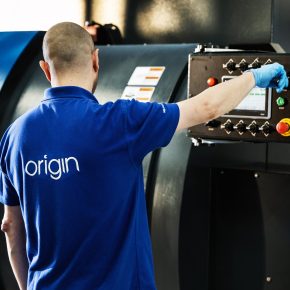
Should the Code for Sustainable Homes and BREEAM become mandatory?
Those involved with new residential and non-residential buildings will be all too aware of the amount of paperwork and legislation that accompanies projects of all sizes, and of the number of different organisations that are required to be involved on even the smallest scheme. As well as creating additional costs and delays, such red tape is also resulting in some cases in poorer quality buildings. This can unfortunately happen when the design process becomes a tick box compliance exercise, rather than taking into account what is best for the building and its future occupants.
Often, the main confusion is caused by the requirements imposed separately by planning officers and building control officers, which in some cases can even be contradictory. Planning officers may set requirements for achieving a particular Code for Sustainable Homes (CSH) or BREEAM target for a scheme, or state a minimum carbon reduction for the site or a specific renewables contribution.
These requirements are over and above the requirements of the Building Regulations and, therefore, create a secondary tier of compliance and assessments that can complicate the process unnecessarily.
Rather than continuing to build resentment against Government policy, we should be getting the basics in place first. The reality is that the current local Planning policies requiring CSH, BREEAM and renewable energy assessments have been created to fill a noticeable gap within national policy on sustainability. Sustainability is a national issue and, therefore, should really be tackled at a national level.
The current review of the Code for Sustainable Homes scheme (which is owned by the Government), as part of its wider evaluation of perceived unnecessary red tape, is certainly welcome. However, it is important that this process does not result in the jettisoning of the entire scheme, without having an additional means of including the beneficial parts within alternative legislation.
There are many positive aspects to CSH and BREEAM; it is important to remember that buildings last for a long time, and therefore careful consideration for future flexibility and appropriate materials specification (in terms of thermal performance, durability, response sourcing and recyclability/reuse) is vital. If sustainability is truly going to be achieved, then today’s new builds simply cannot be allowed to become tomorrow’s redevelopment fodder. Just by way of a small example, simple design elements required by CSH, such as designated space for clothes drying and recycling collections, are inexpensive and no-brainers from an environmental point of view, plus they can help improve the occupants’ quality of life, while the provision of Home User Guides (rather than just a pile of appliance manuals) will ensure that occupants understand how to use their heating controls and other technologies, resulting in better energy efficiency.
But not everything within BREEAM and CSH is so useful or straightforward, largely because there is unnecessary complexity in these two programmes. Streamlining them, to cut out some of the bureaucracy, will help to avoid wasting money and time. For example, flood risk in particular is flawed in its current inclusion in CSH there shouldn’t be a mandatory requirement to look at it as part of the CSH assessment if it hasn’t been deemed to be a problem at planning, as this only adds unnecessary cost and greater amounts of paperwork. Similarly, there shouldn’t be credits
for producing unnecessary reports, or creating needless complexity in projects.
There is already an established Building Control system for checking that building work is carried out to the necessary standards. While this standard previously only considered health and safety issues for future occupants, recent changes have now also brought disabled access and energy efficiency into the remit of the same local authority department. The obvious next step would be to take the best bits of the CSH and BREEAM schemes, and include them within the Building Regulations.
This would provide a number of significant benefits. It would:
- Remove the need for additional third party accreditation bodies, and therefore reduce costs
- Enable robust on-site checking by building control officers of all items
- Enable negotiations with building control where site constraints exist (there is currently very limited flexibility within the CSH and BREEAM schemes)
- Reduce the pressure on planning officers to review reports that they do not have the technical knowledge to understand
- Reduce the time delay at the end of the project when planning officers discharge the CSH and BREEAM planning conditions
- Reduce the paperwork requirements of contractors and consultants, enabling attention to be focused on achieving quality buildings
Buildings should be judged on their performance in real life, rather than a rating on a certificate. Too many times we have seen supposedly highly sustainable buildings perform poorly in reality, as the design has focused too much on ticking boxes on an assessment rather than delivering an appropriate building.
As the BREEAM brand is owned by the Building Research Establishment and not the Government, it is unlikely that any Government review will help to reduce the burden on non-residential buildings in the short term. The reality is that implementing simple and achievable sustainable measures
on all buildings will provide a far greater impact on both overall performance and people’s attitudes than imposing largely unrealistic targets on a minority of buildings. As such, the Government’s review should also encompass the standards imposed by local authorities.
By creating global targets for sustainability within Building Regulations, we can certainly reduce the amount of paperwork and bureaucracy, as well as improve the average standard of sustainability within new build and refurbishment schemes. With such clear-cut benefits, surely simplifying the system in this way is a no-brainer?
Latest news

21st November 2024
Altro distils style and performance at English Spirit
English Spirit Distillery has used an extensive package of Altro products front and back of house, in their new visitor centre café, shop and viewing area for the working distillery.
Posted in Articles, Bathrooms, Bedrooms & Washrooms, Building Industry News, Building Products & Structures, Building Systems, Case Studies, Floors, Interior Design & Construction, Interiors, Kitchens, Restoration & Refurbishment, Retrofit & Renovation, Timber Buildings and Timber Products, Walls
21st November 2024
Abloy UK creates bespoke locking solution for Secure Information Boxes
Abloy UK has supplied The Safety Letterbox Company Ltd with a bespoke Sentry CL811 Camlock for use in its Secure Information Boxes, assisting life safety and complying with new regulations and legislation for high rise buildings.
Posted in Access Control & Door Entry Systems, Architectural Ironmongery, Articles, Building Industry News, Building Products & Structures, Building Regulations & Accreditations, Building Services, Case Studies, Facility Management & Building Services, Health & Safety, Posts, Restoration & Refurbishment, Retrofit & Renovation, Security and Fire Protection
20th November 2024
CUPA: CUPACLAD enhances hotel aesthetics with a creative natural slate façade
Situated at the northern edge of a newly developed retail park near Bristol, the Abbey Wood Travelodge was conceived as part of the company’s new Budget-Luxe line of hotels – it features CUPACLAD, from CUPA PIZARRAS.
Posted in Articles, Building Industry News, Building Products & Structures, Building Systems, Case Studies, Cladding, Concrete, Cement, Admixtures, Facades, Posts, Restoration & Refurbishment, Retrofit & Renovation, Walls
20th November 2024
Origin launches in-house powder coating facility
Origin’s latest investment is set to redefine industry standards as it launches its own in-house powder coating facility.
Posted in Aluminium Products, Articles, Building Industry News, Building Products & Structures, Building Systems, Doors, Glass, Glazing, Innovations & New Products, Paints, Coatings & Finishes, Restoration & Refurbishment, Retrofit & Renovation, Site Preparation, Windows
 Sign up:
Sign up: